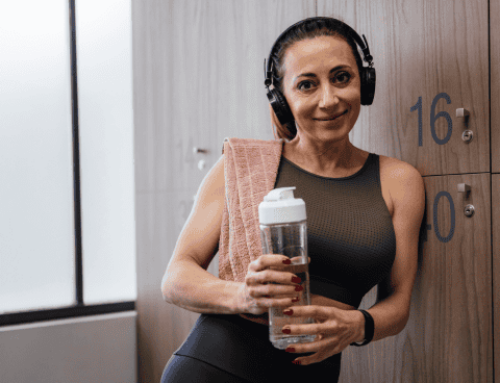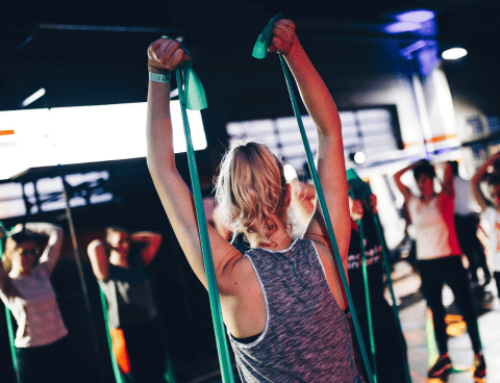Examining the Science Behind 4 Popular Recovery Techniques
In a previous article, I discussed how proper eating, sleeping and hydration are the biggest factors in helping your body recover after a workout.
But for those who already have those three pillars on-point and are following a regular training schedule, you may have interest in some other modalities of recovery. Let’s take a closer look at a few popular options and discuss their respective merit.
Ice Baths
Ice Baths have been used for many decades to reduce muscle soreness after a hard workout. The thought process behind the ice bath is that the blood vessels will constrict from the cold water, which will push the blood and byproducts of exercise (such as lactic acid) out of the muscles more quickly. Then when you get out of the ice bath, large amounts of new blood will rush in and begin the recovery process.
The research on this method is very inconclusive. Some studies have shown minor positive results, while others have shown no difference to that of other cooldown methods. A 2016 study in the Journal of Physiology performed muscle biopsies on individuals who used an ice bath vs individuals who didn’t and found the same inflammatory response in both, so it did not in fact help recovery. The major theory behind why some people have positive results is the placebo effect, which just means if you believe it works, then it will work. So for those of you reading this if you swear by ice baths, then keep doing it. For those of you who are intimidated by the thought of plunging in icy water, the good news is it may not help you recover either way.
Foam Rolling
Foam rolling is the poor man’s massage. The primary goal of foam rolling is to restore gliding surfaces to your tissue by releasing trigger points. A 2015 systematic review of the literature published in the International Journal of Sports Physical Therapy found that self-myofascial release can increase joint range of motion without increasing pain or soreness associated with DOMS. This is not necessarily a rave review in terms of research conclusions, but it shows when performed correctly, foam rolling is not a harmful intervention.
With foam rolling, I believe the research will soon catch up with the anecdotal benefits espoused by many athletes. It is used effectively throughout musculoskeletal rehab and I believe should be utilized by all athletes daily as an injury prevention technique. For those new to the technique or eager to learn more, here are the basics.
There are a lot of tools that have been developed to foam roll. I believe the best and most affordable tool is the lacrosse ball. It is smooth but dense and allows you to get deep into most tissues. Some other economical options are an actual foam roller, a softball, a barbell or a “peanut” (2 lacrosse balls taped together).
When performing self-myofascial release, you should roll gently until you find a trigger point. A trigger point is a spot that is tender when pressure is put on it.
Once you find a trigger point in the muscle, you should increase the pressure put on it, and perform one of the following techniques:
- Contract, Relax: Engage the muscle for 5 seconds and then relax to allow the implement to go deeper.
- Flossing: Take the muscle through its range of motion, which glides the muscle over the implement. An example would be flexing and extending your knee for a trigger point on the quadriceps for 10-15 repetitions.
- Tac and Twist: With this method, you put pressure on the implement and provide a rotational force by either twisting the ball or your body while maintaining the pressure. Hold for about 30 seconds or floss for 10-15 reps and recheck the area for trigger points.
- Gradually Increase Pressure: This is the most basic method, but it also takes the longest. Gradually increase the pressure on the trigger point as you can tolerate. Ideally, you do not stop working on a trigger point until it releases (could take 1-3 minutes). If you have not rolled before, though, you may not be able to get rid of those trigger points the first time.
If you’d like to learn more about how and why to foam roll certain areas, check out STACK’s definitive guide on the topic.
Stretching
A 2011 Systematic review of the literature published in the Cochrane Libraries found that “muscle stretching, whether conducted before or after after exercise (or both), does not produce clinically important reductions in delayed-onset muscle soreness in healthy adults.” There is a common misconception that stretching decreases muscle soreness, but there is no research that backs this one up. This does not mean that you shouldn’t stretch before or after a lift, but the purpose is not to reduce muscle soreness. Rather, it can instead be to prepare the muscles for a lift and/or bring muscles back to resting length after a lift.
Compression
Compression garments have become more popular as a method to help reduce muscle soreness and increase recovery. The thought process is that compressing the muscle can increase blood flow, which will increase nutrients brought to the muscle and help push out some of the byproducts of the workout. A 2017 Study published in the Journal of Rehabilitation found that the subjects who used compression following their eccentric lift workout were able to recover their isometric strength faster and reported less soreness than the group who was not given compression. There is still more research that should be performed on this topic, but there is reason to believe that compression can be an effective way to reduce DOMS and recover more effectively from a workout.
How you recover is almost equally as important as how you train. If you are not hitting the essentials, you are leaving a big chunk of your gains on the table. You’re also not training or playing as well as you could be in the short-term. Get enough sleep, eat enough food (most of it being low or minimally processed), and drink enough water. That will immediately give you an advantage over the competition.
Then, feel free to try out the techniques listed above. We cannot all afford to get deep tissue massages multiple times a week, but most of us can afford a lacrosse ball. There is no substitute for hard work. Challenge yourself in the weight room, and then challenge yourself to own your recovery. If you can master both, you’ll be very tough to beat.
Photo Credit: Tatomm/iStock
READ MORE:
RECOMMENDED FOR YOU
MOST POPULAR
Examining the Science Behind 4 Popular Recovery Techniques
In a previous article, I discussed how proper eating, sleeping and hydration are the biggest factors in helping your body recover after a workout.
But for those who already have those three pillars on-point and are following a regular training schedule, you may have interest in some other modalities of recovery. Let’s take a closer look at a few popular options and discuss their respective merit.
Ice Baths
Ice Baths have been used for many decades to reduce muscle soreness after a hard workout. The thought process behind the ice bath is that the blood vessels will constrict from the cold water, which will push the blood and byproducts of exercise (such as lactic acid) out of the muscles more quickly. Then when you get out of the ice bath, large amounts of new blood will rush in and begin the recovery process.
The research on this method is very inconclusive. Some studies have shown minor positive results, while others have shown no difference to that of other cooldown methods. A 2016 study in the Journal of Physiology performed muscle biopsies on individuals who used an ice bath vs individuals who didn’t and found the same inflammatory response in both, so it did not in fact help recovery. The major theory behind why some people have positive results is the placebo effect, which just means if you believe it works, then it will work. So for those of you reading this if you swear by ice baths, then keep doing it. For those of you who are intimidated by the thought of plunging in icy water, the good news is it may not help you recover either way.
Foam Rolling
Foam rolling is the poor man’s massage. The primary goal of foam rolling is to restore gliding surfaces to your tissue by releasing trigger points. A 2015 systematic review of the literature published in the International Journal of Sports Physical Therapy found that self-myofascial release can increase joint range of motion without increasing pain or soreness associated with DOMS. This is not necessarily a rave review in terms of research conclusions, but it shows when performed correctly, foam rolling is not a harmful intervention.
With foam rolling, I believe the research will soon catch up with the anecdotal benefits espoused by many athletes. It is used effectively throughout musculoskeletal rehab and I believe should be utilized by all athletes daily as an injury prevention technique. For those new to the technique or eager to learn more, here are the basics.
There are a lot of tools that have been developed to foam roll. I believe the best and most affordable tool is the lacrosse ball. It is smooth but dense and allows you to get deep into most tissues. Some other economical options are an actual foam roller, a softball, a barbell or a “peanut” (2 lacrosse balls taped together).
When performing self-myofascial release, you should roll gently until you find a trigger point. A trigger point is a spot that is tender when pressure is put on it.
Once you find a trigger point in the muscle, you should increase the pressure put on it, and perform one of the following techniques:
- Contract, Relax: Engage the muscle for 5 seconds and then relax to allow the implement to go deeper.
- Flossing: Take the muscle through its range of motion, which glides the muscle over the implement. An example would be flexing and extending your knee for a trigger point on the quadriceps for 10-15 repetitions.
- Tac and Twist: With this method, you put pressure on the implement and provide a rotational force by either twisting the ball or your body while maintaining the pressure. Hold for about 30 seconds or floss for 10-15 reps and recheck the area for trigger points.
- Gradually Increase Pressure: This is the most basic method, but it also takes the longest. Gradually increase the pressure on the trigger point as you can tolerate. Ideally, you do not stop working on a trigger point until it releases (could take 1-3 minutes). If you have not rolled before, though, you may not be able to get rid of those trigger points the first time.
If you’d like to learn more about how and why to foam roll certain areas, check out STACK’s definitive guide on the topic.
Stretching
A 2011 Systematic review of the literature published in the Cochrane Libraries found that “muscle stretching, whether conducted before or after after exercise (or both), does not produce clinically important reductions in delayed-onset muscle soreness in healthy adults.” There is a common misconception that stretching decreases muscle soreness, but there is no research that backs this one up. This does not mean that you shouldn’t stretch before or after a lift, but the purpose is not to reduce muscle soreness. Rather, it can instead be to prepare the muscles for a lift and/or bring muscles back to resting length after a lift.
Compression
Compression garments have become more popular as a method to help reduce muscle soreness and increase recovery. The thought process is that compressing the muscle can increase blood flow, which will increase nutrients brought to the muscle and help push out some of the byproducts of the workout. A 2017 Study published in the Journal of Rehabilitation found that the subjects who used compression following their eccentric lift workout were able to recover their isometric strength faster and reported less soreness than the group who was not given compression. There is still more research that should be performed on this topic, but there is reason to believe that compression can be an effective way to reduce DOMS and recover more effectively from a workout.
How you recover is almost equally as important as how you train. If you are not hitting the essentials, you are leaving a big chunk of your gains on the table. You’re also not training or playing as well as you could be in the short-term. Get enough sleep, eat enough food (most of it being low or minimally processed), and drink enough water. That will immediately give you an advantage over the competition.
Then, feel free to try out the techniques listed above. We cannot all afford to get deep tissue massages multiple times a week, but most of us can afford a lacrosse ball. There is no substitute for hard work. Challenge yourself in the weight room, and then challenge yourself to own your recovery. If you can master both, you’ll be very tough to beat.
Photo Credit: Tatomm/iStock
READ MORE:











